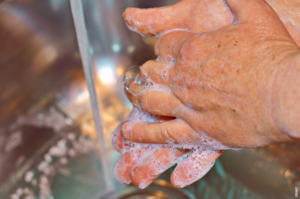Introduction
The skin is a remarkable organ that constantly renews itself, ensuring its health and vitality. In this article, we will explore the fascinating process of skin renewal and the various factors that contribute to its rejuvenation.
The Science Behind Skin Renewal
At a cellular level, the skin undergoes a continuous cycle of renewal. The outermost layer of the skin, known as the epidermis, is composed of several layers of specialized cells. The deepest layer, called the basal layer, contains stem cells that are responsible for replenishing the other layers.
As new cells are generated in the basal layer, they gradually move towards the surface of the skin. Along the way, they undergo a transformation, becoming more flattened and keratinized. Eventually, these cells are shed from the skin’s surface, making way for newer cells underneath.
Factors Influencing Skin Renewal
Several factors influence the rate at which the skin renews itself. One of the key factors is age. As we age, the turnover of skin cells slows down, leading to a dull and less vibrant complexion. Additionally, external factors such as sun exposure, pollution, and lifestyle choices like smoking can also impact the skin’s ability to renew itself.
Another crucial factor in skin renewal is collagen production. Collagen is a protein that provides structural support to the skin. As we age, collagen production decreases, leading to the formation of wrinkles and sagging skin. However, certain lifestyle choices, such as a healthy diet rich in fruits and vegetables, regular exercise, and adequate sleep, can help stimulate collagen production and promote skin renewal.
The Role of Skincare
Skincare plays a vital role in supporting the skin’s renewal process. Cleansing the skin removes impurities and dead skin cells, allowing newer cells to surface. Exfoliation also aids in the removal of dead cells, promoting a more youthful appearance.
Moisturizing is another crucial step in skincare. By providing hydration to the skin, moisturizers help maintain its elasticity and contribute to the overall health of the epidermis. Additionally, the use of sunscreen is essential in protecting the skin from harmful UV rays, which can accelerate the aging process.
Natural Remedies for Skin Renewal
In addition to a good skincare routine, several natural remedies can aid in skin renewal. These include:
1. Hydration: Drinking an adequate amount of water helps keep the skin hydrated from within, promoting a healthy complexion.
2. Antioxidant-rich foods: Consuming foods high in antioxidants, such as berries, green leafy vegetables, and nuts, can help protect the skin from oxidative stress and support its renewal.
3. Facial massages: Gentle facial massages can stimulate blood circulation, promoting the delivery of oxygen and nutrients to the skin cells.
Post
Post
Conclusion
The process of skin renewal is a fascinating journey that occurs constantly beneath the surface. Understanding the factors that influence skin renewal, practicing a good skincare routine, and incorporating natural remedies can all contribute to maintaining a healthy and youthful complexion. Let us embrace and appreciate the incredible ability of our skin to renew itself.



